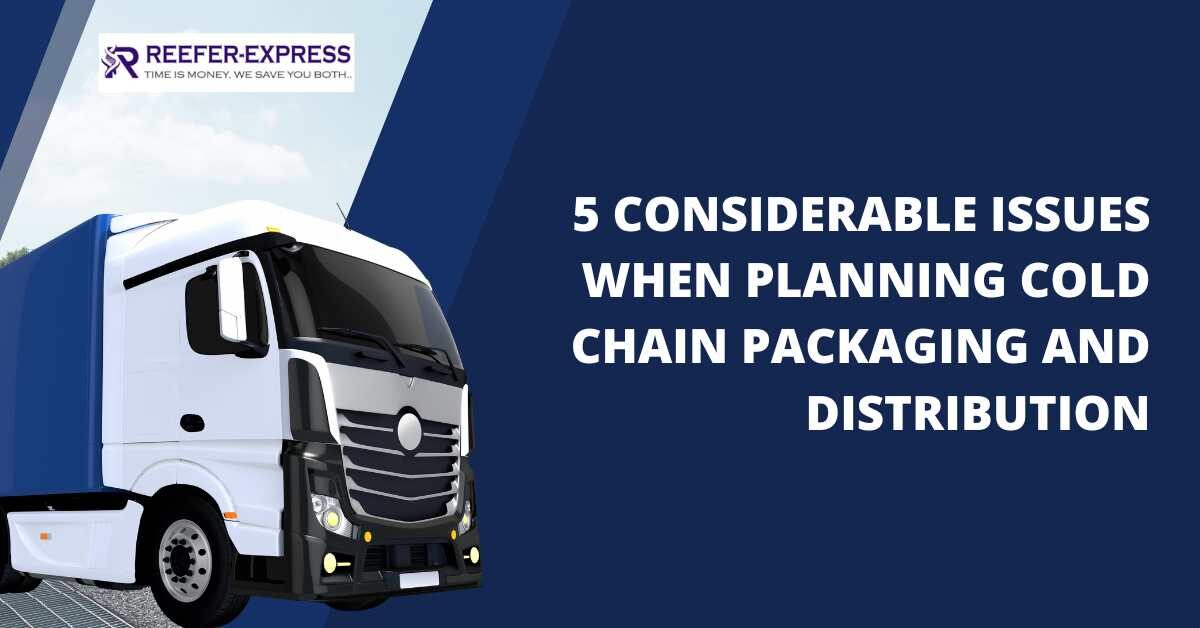The efficient management of temperature-sensitive products during storage and transportation is essential for ensuring their quality and safety. The cold chain, which encompasses the entire process of handling perishable goods while maintaining specific temperature conditions, presents unique challenges. When planning cold chain packaging and distribution, several crucial issues need to be considered to guarantee the successful delivery of goods in optimal condition. In this blog post, we will explore five key considerations that play a vital role in the effective planning of cold chain logistics.
1. Temperature Control: Keeping Cool Amidst the Challenges
Maintaining proper temperature control is paramount when it comes to preserving the quality and integrity of cold chain products. Variations in temperature can lead to spoilage, degradation, or loss of efficacy, rendering the products unfit for consumption or ineffective. To address this challenge, it is crucial to select appropriate packaging materials and insulation methods that provide reliable thermal protection. Insulated containers, such as foam or vacuum-insulated panels, can help maintain the desired temperature range. Additionally, integrating temperature monitoring devices and data loggers throughout the distribution process allows for real-time tracking and immediate identification of any temperature deviations, ensuring timely corrective measures can be taken.
2. Packaging Design: A Shield against Perils
Designing packaging solutions that can withstand the rigors of transportation and effectively maintain temperature stability is essential. The packaging should be robust enough to protect products from physical damage while preserving their temperature integrity. Key factors such as insulation thickness, moisture resistance, and ventilation must be carefully evaluated during the packaging design phase. Collaborating with packaging experts and conducting thorough testing can help identify the most suitable packaging design for specific products. Moreover, optimizing the size and weight of the packaging can minimize transportation costs while ensuring adequate product protection.
3. Regulatory Compliance: Navigating the Landscape of Rules and Regulations
Adhering to regulatory requirements and industry standards is a critical aspect of successful cold chain logistics. Different countries and regions have specific regulations governing temperature-controlled storage and transportation. Compliance with guidelines such as the Good Distribution Practice (GDP) is crucial to maintaining product quality and ensuring consumer safety. Staying updated with relevant regulations and working closely with regulatory bodies are key to ensuring full compliance. Failure to meet regulatory requirements can lead to legal consequences and damage the reputation of the company. Hence, thorough knowledge of the applicable regulations and a robust compliance strategy are vital components of cold chain planning.
4. Supply Chain Visibility: Illuminating the Path to Success
Maintaining visibility and transparency throughout the cold chain is a significant challenge. Lack of real-time information on product location, temperature conditions, and potential disruptions can result in increased risks and delays. Implementing advanced tracking technologies, such as GPS-enabled devices and cloud-based data management systems, can provide real-time visibility into the supply chain. This enables proactive decision-making, immediate intervention in case of temperature deviations, and efficient handling of unexpected events. With enhanced visibility, stakeholders can track the movement of products, monitor temperature conditions, and anticipate potential bottlenecks, leading to improved operational efficiency and customer satisfaction.
5. Training and Quality Assurance: Empowering the Human Element
The success of cold chain packaging and distribution heavily relies on the knowledge and skills of the personnel involved in the process. Proper training programs should be implemented to educate employees on the importance of proper handling procedures, temperature monitoring, and quality control protocols. Regular assessments and audits can help identify any gaps in knowledge and ensure continuous improvement. Establishing a robust quality assurance system that includes regular equipment maintenance, calibration, and monitoring further enhances the reliability and effectiveness of the cold chain. By empowering the human element, companies can foster a culture of excellence and ensure the smooth execution of cold chain operations.
Conclusion:
Planning cold chain packaging and distribution requires careful consideration of multiple factors. Temperature control, packaging design, regulatory compliance, supply chain visibility, and training are among the key issues that demand attention. By addressing these challenges effectively, companies can ensure the safe and efficient transportation of temperature-sensitive products, maintain their quality, and uphold consumer satisfaction.
How Reefer Express Plays A Vital Role In Cold Chain Logistics Management
Looking to optimize your cold chain logistics management? Look no further than Reefer Express! Our expert team specializes in providing reliable and efficient transportation solutions for temperature-sensitive products. With state-of-the-art refrigerated containers and advanced tracking technologies, we ensure your goods are delivered safely and within the required temperature range. Don’t let temperature fluctuations compromise your product quality—partner with Reefer Express today and experience the difference in cold chain excellence. Contact us now to discuss your specific needs and discover how our expertise can benefit your business.






